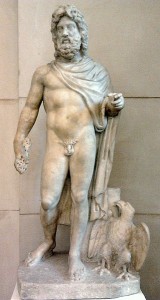 The god Jupiter has occasionally appeared to me over the years, and I have found his presence surprising for two reasons. The first is that he surely understands that I am a feminist, and a Dianic at that, and am therefore rather miffed about the role his cult has played in the suppression of matrifocal religion. The second thing that has surprised me is that Jupiter’s energy has not seemed offensive and thuggish. He looks stocky and muscular, with an impressive amount of hair and beard, but his energy feels solid yet gentle.Jupiter is considered the Roman equivalent of the Greek god Zeus, the father god of the thunderbolt, who rules the pantheon. He is also the namesake for the large red planet, considered in astrology the planet of good fortune. Some scholars say that the Indo-European Roman Jupiter became merged with Zeus due to Greek influence in late classical times. Others say that an Etruscan god Tinia, who may himself have been drawn from Greek influence, became merged with the Roman Jupiter. Still others say that both Jupiter and Zeus are forms of a proto-Indo-European supreme sky father deity. An alternate idea is that a pre-Indo-European god of unknown name became merged with Jupiter after Indo-European conquest. None of these hypotheses are exclusionary: a proto-Indo-European Sky Father may have merged with prominent local gods in the Greek and Roman peninsulas, later becoming merged again, with another god Tinia thrown into the mix during a period of Etruscan influence.There is not much written for the lay reader on the earliest form of Jupiter. Most people simply do not find early Roman religion very interesting. We do know that his earliest known shrine was southeast of Rome and pre-dated Rome, and that a confederation from the Latin cities convened there for ceremony twice a year. Stewart Perowne says of Jupiter’s temple in Rome, “It is rather a shock to find that he was neither godlike nor human: he was just an old stone, Jupiter Lapis.” But now my interest is piqued. Here we have the material connection, the fundamental source in nature.Jupiter Lapis “the old stone” oversaw both individual oaths and the ratification of treaties. Perowne asserts that this “goes back to the neolithic days, perhaps even before them . . . When the metal-users arrived they associated these venerable and rather terrifying flints with the greatest deity they knew, the god of light, Jupiter, who among other functions was the punisher of perjurors.”
The god Jupiter has occasionally appeared to me over the years, and I have found his presence surprising for two reasons. The first is that he surely understands that I am a feminist, and a Dianic at that, and am therefore rather miffed about the role his cult has played in the suppression of matrifocal religion. The second thing that has surprised me is that Jupiter’s energy has not seemed offensive and thuggish. He looks stocky and muscular, with an impressive amount of hair and beard, but his energy feels solid yet gentle.Jupiter is considered the Roman equivalent of the Greek god Zeus, the father god of the thunderbolt, who rules the pantheon. He is also the namesake for the large red planet, considered in astrology the planet of good fortune. Some scholars say that the Indo-European Roman Jupiter became merged with Zeus due to Greek influence in late classical times. Others say that an Etruscan god Tinia, who may himself have been drawn from Greek influence, became merged with the Roman Jupiter. Still others say that both Jupiter and Zeus are forms of a proto-Indo-European supreme sky father deity. An alternate idea is that a pre-Indo-European god of unknown name became merged with Jupiter after Indo-European conquest. None of these hypotheses are exclusionary: a proto-Indo-European Sky Father may have merged with prominent local gods in the Greek and Roman peninsulas, later becoming merged again, with another god Tinia thrown into the mix during a period of Etruscan influence.There is not much written for the lay reader on the earliest form of Jupiter. Most people simply do not find early Roman religion very interesting. We do know that his earliest known shrine was southeast of Rome and pre-dated Rome, and that a confederation from the Latin cities convened there for ceremony twice a year. Stewart Perowne says of Jupiter’s temple in Rome, “It is rather a shock to find that he was neither godlike nor human: he was just an old stone, Jupiter Lapis.” But now my interest is piqued. Here we have the material connection, the fundamental source in nature.Jupiter Lapis “the old stone” oversaw both individual oaths and the ratification of treaties. Perowne asserts that this “goes back to the neolithic days, perhaps even before them . . . When the metal-users arrived they associated these venerable and rather terrifying flints with the greatest deity they knew, the god of light, Jupiter, who among other functions was the punisher of perjurors.”
REVIEW Jezebel: The Untold Story of the Bible’s Harlot Queen by Lesley Hazelton
May 10, 2013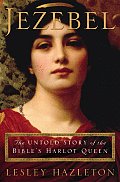 Just as there is an aphorism that “the victors write history,” there is another that says “history is continually rewritten.” Both of these sayings apply to this rehabilitation of the biblical queen. Hazelton views Jezebel’s story as an earlier version of tensions between liberalism and religious zealotry, drawing direct parallels to present day conundrums over Christian, Jewish, and Muslim fundamentalism. Hazelton’s prose is spellbinding, and though the book does not read like a novel, the story is riveting all the same. Rhetorical asides are satisfying and engrossing. There are many good, satisfying quotes from this book:
Just as there is an aphorism that “the victors write history,” there is another that says “history is continually rewritten.” Both of these sayings apply to this rehabilitation of the biblical queen. Hazelton views Jezebel’s story as an earlier version of tensions between liberalism and religious zealotry, drawing direct parallels to present day conundrums over Christian, Jewish, and Muslim fundamentalism. Hazelton’s prose is spellbinding, and though the book does not read like a novel, the story is riveting all the same. Rhetorical asides are satisfying and engrossing. There are many good, satisfying quotes from this book:
When your story is written by those in passionate opposition to everything you believe in, it will be, to put it mildly, warped. Everything becomes twisted; every action, every gesture, becomes not only suspect but turned on its head. The wildest rumors are passed off as fact. Inconvenient facts are ignored or edited out, relegated to oblivion, until all we are left with is not a real person but an image, a morality-tale character, which is how Jezebel would become a kind of wicked witch of the east.
The first thing Hazelton does is to dispense with the common portrayal of Jezebel as a sexualized being, a harlot. This was rather disappointing for me, because that was what motivated me to buy the book. I had read in another review that this book challenges the idea of the “sacred prostitute” in ancient Near East religions. I myself have become frustrated with the “sacred prostitute” terminology, having come to the conclusion that expressions of sexuality in ancient religions bears no resemblance to prostitution, sacred or otherwise. The concept of the “sacred prostitute” has long been politically used to denigrate priestess cults, and more recently to glorify prostitution. I would love to see this phrase stricken from our spiritual conversation.But if I hoped to find a more nuanced exploration of feminine sexuality in religion I was disappointed here on many levels. Hazelton begins her dismissal of the harlot angle by expounding on the limitations of nineteenth century archaeologists, always exasperating because at this point I can see clearly where such a setup is heading. After raking the pioneering archaeologists over the coals, she concedes that they did not come up with this sacred prostitute theory out of nowhere, then proceeds to accuse the Greek historian Herodotus of inventing the concept whole cloth. Hazelton’s treatment of this subject exemplifies problems with her narrative found throughout the book: the naïve acceptance of twenty-first century archaeological perspective, which has its own patriarchal biases; the impulse to conflate goddesses along with a generally poor understanding of Semitic polytheistic cultures; and a tendency for her analysis to fall into the very absolutism she decries in the prophets of Israel.But despite the flaws in perspective, I would not write off this book. The political drama surrounding the story is fascinating, and although this is not my forte, it seems that Hazelton has a good grasp of Old Testament history. She has visited most of the places where the action occurs, and her description of the settings adds an immediacy to her account. There is a map in the front of the book which is helpful.In the end I agree with Hazelton’s refusal to examine Jezebel’s life and legacy in sexual terms. The new framing works, at least for now, though perhaps in the future a biographer will dismiss the theme of religious fanaticism as emphatically as Hazelton dismisses the sexual theme. Like many a good myth, the story of Jezebel will probably always be more useful than it is true.
Invoking Animal Magic
May 3, 2013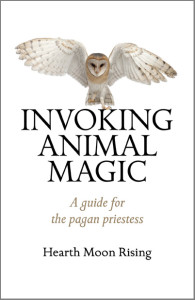 I am pleased this week to write about my forthcoming book Invoking Animal Magic: A guide for the Pagan priestess. The book reflects my research into the legends and folklore of various animals, as well as my direct experience in ritual and spellcasting. Rather than write an exhaustive encyclopedia of the “meanings” of different animals, I have elected to identify some of the principles of animal magic in Euro-shamanism and discuss them in a general way. The nine animals I have chosen to explore in depth are representative of different types of animals: those that live underground, those that migrate, those that fly, those that hibernate, etc.Nine is the number of pregnancy, and while I have no illusions that a book is anything like a baby, the process of bringing forth a book is like giving birth. The book is something that came from me, but at the same time is not me. I keep thinking about the last lines of Sylvia Plath’s poem “Metaphors”:
I am pleased this week to write about my forthcoming book Invoking Animal Magic: A guide for the Pagan priestess. The book reflects my research into the legends and folklore of various animals, as well as my direct experience in ritual and spellcasting. Rather than write an exhaustive encyclopedia of the “meanings” of different animals, I have elected to identify some of the principles of animal magic in Euro-shamanism and discuss them in a general way. The nine animals I have chosen to explore in depth are representative of different types of animals: those that live underground, those that migrate, those that fly, those that hibernate, etc.Nine is the number of pregnancy, and while I have no illusions that a book is anything like a baby, the process of bringing forth a book is like giving birth. The book is something that came from me, but at the same time is not me. I keep thinking about the last lines of Sylvia Plath’s poem “Metaphors”:
Money’s new-minted in this fat purse.I’m a means, a stage, a cow in calf.I’ve eaten a bag of green apples,Boarded the train there’s no getting off
Yes, the train has left the station. All the revising, the endless fact checking has to come to an end somewhere. Errors in fact and grammar must now stand. Even scarier is the thought that decades later I may disagree with what I’ve written. How much of what I thought twenty years ago is true for me today?But mostly I’m excited about the start of another journey, looking forward to talking to people about my ideas and curious about the direction they will take me and others.The website for Invoking Animal Magic has more information and an excerpt. The book will be available to hold in your hands in a few months. If you live in the UK, you can pre-order on Amazon. You can receive an email when the book is ready for purchase by going to the US Amazon page or leaving your email address under “subscribe” on the Invoking Animal Magic webpage. Even better, ask your local metaphysical store to carry the book. If you are interested in writing a book review from a pdf copy, let me know.Here’s to an intriguing and illuminating adventure!
Is Friday for Frigga or Freyja?
April 26, 2013
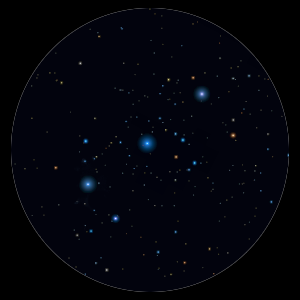
Unlearning High School Mythology
April 19, 2013The Greek pantheon became large and complex because so many cultural influences shaped Greek history. New gods became incorporated through outside invasions, trade interactions, and the conquest of other states. The foundational strain of Greek civilization, called the Pelasgian culture by ancient Greek historians and part of the wider civilization of Old Europe by archaeologist Marija Gimbutas, placed goddesses at the center of worship. Indo-European invasions introduced a patriarchal religion headed by a sky god Zeus. In time other deities were introduced through trade (e.g., Aphrodite) or conquest (e.g., Hecate). Meanwhile devotion to pre-Indo-European goddesses such as Artemis or Athena persisted.Like nearly all polytheistic societies, the Greeks absorbed new deities by incorporating them in a common religious framework. A favored way of doing this was to marry one of the old goddesses to a new god. The goddess Hera became the wife of god Zeus and Persephone the wife of Hades. Since marriage was seen as subjugation of the goddess, where the cult of a goddess was particularly strong she remained virgin, as in the case of Artemis or Athena. Another way of creating order in the pantheon was to assign specific functions to different deities. Thus Aphrodite was not allowed to do any “work,” but must (officially) stick to her realm of romantic love. Sometimes a deity with a weaker following would become the priestess of a deity with a more robust cult, especially if these deities had similar functions. Thus the Arcadian bear goddess Callisto was said to be a priestess of Artemis. The ecstatic Dionysus was followed by the wild goddesses known as the Maenads. Other times deities with similar functions would be subsumed under the name of the deity with the more powerful cult.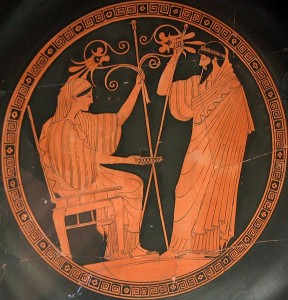
O Royal Juno [Hera] of majestic mien, aerial-form’d, divine, Jove’s [Zeus’] blessed queen,
Thron’d in the bosom of cærulean air, the race of mortals is thy constant care.
The cooling gales thy pow’r alone inspires, which nourish life, which ev’ry life desires.
Mother of clouds and winds, from thee alone producing all things, mortal life is known:
All natures share thy temp’rament divine, and universal sway alone is thine.
With founding blasts of wind, the swelling sea and rolling rivers roar, when shook by thee.
Come, blessed Goddess, fam’d almighty queen, with aspect kind, rejoicing and serene.
Hera is not only the goddess of marriage and the wife of Zeus, she is the creator of everything, the sustainer of life, the protector of people, the force that drives the wind, the waves, and the torrid rivers. She is a big deal.The problems in how we conceptualized the Greco-Roman gods in our high school English class increase exponentially when we begin applying this methodology to other pantheons. Our understanding becomes not only grossly reductionist, but wrong.Let’s look again at the Germanic pantheon. The Germanic tribes, like the Greek, had a steadily growing collection of deities to sort out. Unlike the Greeks, who lived for millennia in the same place and found themselves conquered and reconquered, the Germans grew their pantheon by conquering others and absorbing the local gods, then repeating the process many times as they moved westward. It is common wisdom that the gods of the Vanir branch (including Freya and Freyr), are the Old European gods and the larger Aesir branch (which includes Frigga, Odin, Thor and many others) is the Indo-European one, but the Aesir includes plenty of Old European deities that were absorbed at an earlier time. I have heard Odin described as the old warrior and Thor the young warrior; Skadi the winter goddess and Idunn the spring goddess; Frejya the woman warrior and Frigga the hearth goddess. These depictions are totally accurate but completely wrong.Sometimes a discussion of Germanic mythology from a functional perspective describes the afterlife as the Hall of Valhalla presided over by the god Odin. Only warriors go there, so Odin is the god of the warrior death realm while the goddess Hel is queen of death for ignoble people. But further reading of the myths reveals that half the slain in battle (actually the preferred half) go to Frejya’s Hall of Sessrymnir. Hel’s death field is a sheet of ice, but there is a death goddess by the name of Mengloth who lives on a hill in the underworld called Lyfjaberg. Frigga greets the dead from her island of Fensalir. The god Heimdall meets his faithful in his hall of Himinbjorg. The Germanic tribes seem to have sorted out their gods not by dividing functions, but by allocating real estate in the afterworld. They were a people who lived very close to death, after all.Unlearning high school mythology allows us to make better sense of the Germanic mythology penned by the first generations of Christians, and perhaps even to discern some of their conceptual errors. Next week we will again look at the goddesses Frejya and Frigga, and hopefully understand them in a better way.
How Freyja is the same and different from Frigga
April 12, 2013
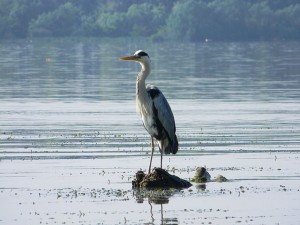
Freyja as Goddess of the Dead
April 5, 2013
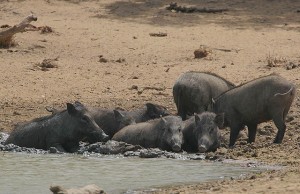
Stay Updated on Hearth Moon Rising’s blog
April 2, 2013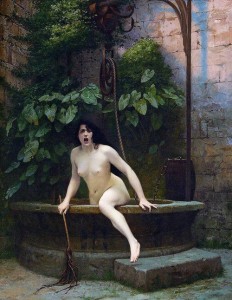
Gyrfalcon Circling the Spruce: Another Frejya Episode
March 29, 2013
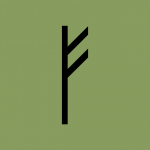
Frejya’s representation throughout the lifecycle suggests an affinity with the sun, which defines the cycle of the year. Her association with both the winter and the summer solstices reaffirm this connection, as does the Yule fire and the summer bonfires. Frejya’s amber necklace represents her command over the sun and hence the passage of time. Those who see Frejya as blond may be focusing on her sun aspect, perhaps dazzled by the brightness of her nimbus. It is interesting in this regard that the Egyptian sun god Horus also takes the form of a falcon.Although Frejya is a goddess for all seasons and all ages, I want to explore Frejya’s death aspect more closely. I will do so in a later installment of this series.
